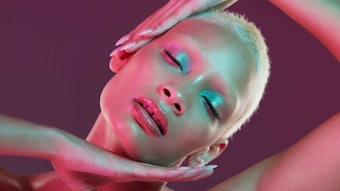Introduction
Studies of contact angles of liquids on surfaces have great technological importance. This is especially true with water because every action of water on earth is controlled by its wetting behavior on the solid with which it comes into contact.1 The hydrophobic or hydrophilic tendency of the surface can be characterized by the angle formed by water on the liquid-surface interface. Water forms droplets with contact angles 90 degrees and higher on a hydrophobic (low-energy) surface and less than 90 degrees on a hydrophilic (high-energy) surface.
Human skin is a hydrophobic surface and the contact angle of water on the skin is approximately 90 degrees.1 Skin care products are complex systems containing numerous ingredients with different physico-chemical properties. Among these ingredients are water, polymers, polar and nonpolar emollients, sunscreen actives, surface active ingredients, humectants, solvents, particulates and pigments. After application of creams and lotions, the skin surface becomes enriched with a mixture of polar and nonpolar molecules with various functional groups. This enrichment leads to the modification of the skin surface and a change in the skin surface energy.
It is reasonable to assume that the change of water contact angle on skin after application of finished goods products represents a superposition of the effects of all its components. The determination of the possible relationship among contact angles of water formed on skin after application of creams and lotions, and the specific benefits that are delivered by these products, will give an important instrumental tool providing insights and optimization criteria for the formulators.










